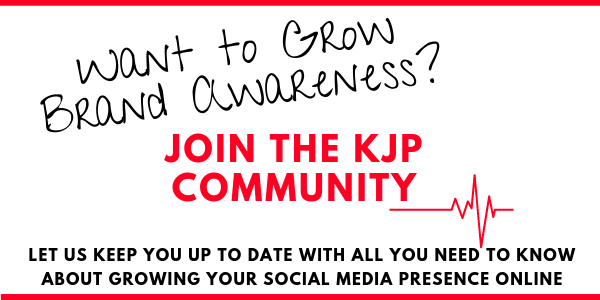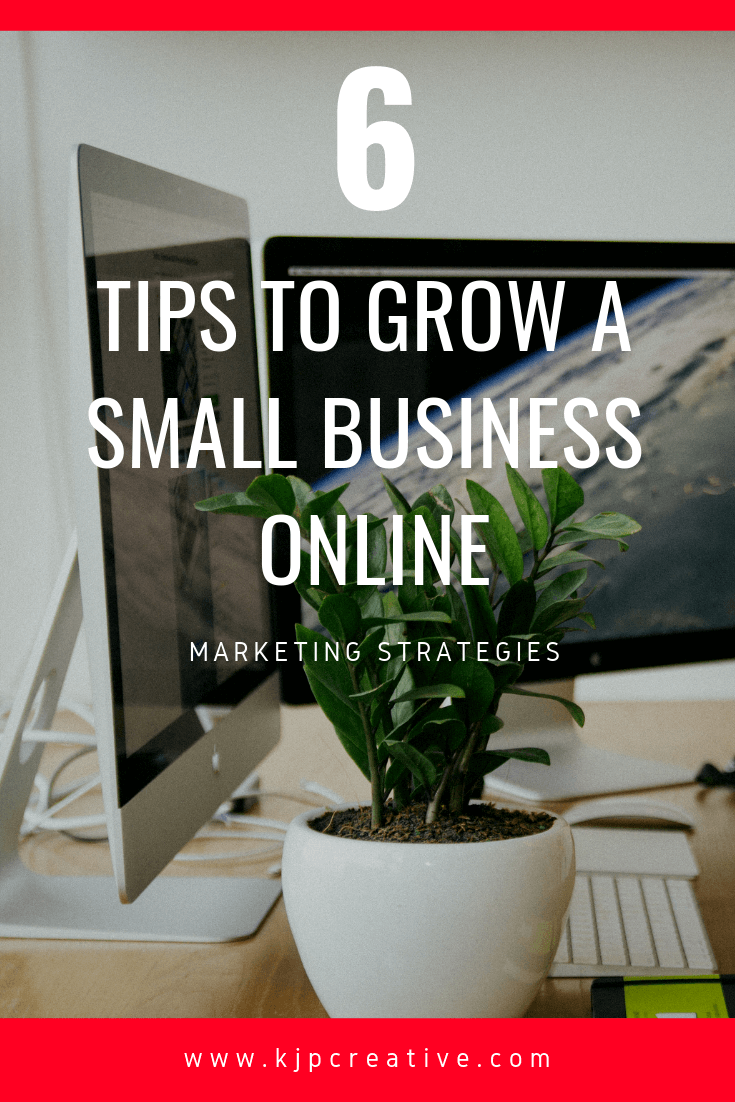
by Karen Petrauskas | Apr 10, 2019
The world of social media is forever changing, and forever will be! It evolves as people find new ways of connecting and communicating with others and as technology develops.
There are new platforms popping up all the time, so where do you begin? Do you spread yourself thin and try to be active on all social platforms or do you choose just one? And how can you keep up with the social channels as a business looking to reach out to an audience and build brand awareness?
First off, if you’ve got a marketing strategy, and more specifically, a social media strategy to adhere to, you’ll know your end game and the targets you’re trying to reach. But if you’re a small business, or are just starting out you may not be that far along the line as yet. That’s ok (although we do suggest creating a marketing strategy), you need to first understand your audience and where they are most likely to ‘hang out’, then establish what you are looking to achieve when you’ve grabbed their attention, and then use the social media networks that are most relevant to them.
If you think about a group of people, say your friends or your colleagues, you would act or speak differently to your best friends than you would with the person you meet at the coffee machine. You’d also have a different rapport with your friends than your clients. The relationships are all different and need to be nurtured in a different way.
Many people think of all social networks being equal – but they’re not. They all have their own specific purposes and all have the job to do in the ways of networking. Understanding their purposes and what to use each channel for will give you a better understanding of how to use them for your businesses and which social network will work best to engage with your customers.
So let’s look at the different social media channels – what are they about and what are they mostly used for?

Facebook
Whether you like Facebook or not, your customers are most likely to be on there in some shape or form. It is the biggest social media network with Facebook had 2.32 billion monthly active users.
Not only do people use it for personal use, it is now becoming an advertising platform for businesses across all industries and sectors.
For business use, Facebook is a place to share company news, updates on offers or promotions along with interspersed industry news. People will come to your Facebook page to find out more about your business and your company culture and values.
With Facebook being the biggest social networks, it is important to have a presence on the platform. Many people looking for a service or product will search through to find a Facebook page as it’s a place that’s familiar, that feels safe and allows a person to take a peek with no pressure.
Always keep your audience in mind with all content that you post. Are the posts fitting with your business, do they match your culture, are they things that your audience will want to see or hear?
Once you’ve established a small audience, you’ll get to know what kind of content they prefer to see as engagement rates will go up and you’ll get more response to your posts. Use Facebook as a way to link your customers to your business and to show the reasons why they should trust your brand and buy from you.

Twitter
Twitter is extremely fast-paced and on the go but it is a great way to establish an audience. It’s an easy and simple platform to use and with 326 million active monthly users, it’s not one to miss! The microblogging platform provides a user to give a status or update in 240 characters and is a sea of information. The platform can be used for news updates, company updates, quotes or inspiration but with the limited number of characters allowed, it’s vital your copy is inviting, enticing and relevant to ensure that people click through to the place you want them to.
Twitter is great for polls, to gauge audience reactions or opinions and to raise brand awareness in bite size snippets. You can post using polls, images, gifs, videos or plain links and as long as you can get your information into the small tweet box, you’re ready to go!
Be sure to respond to comments or new followers, thanking new followers is a great way to build relationships, perhaps asking them a question in return to get to know them a little better. When you know your audience, you can service their needs and add value.

Pinterest
Often Pinterest is a platform that is missed off the social media strategy but we have found that it is an extremely important network to utilise for business. It’s all about eye catching visuals that entice users to click through. The visuals need to show knowledge or expertise, they need to have something to offer and be offering something that another person is looking for.
Content is king, it’s the way that you get people to click through from Pinterest to your website. Therefore you need to ensure that your content is spot on target with what your audience is looking for. Provide the visuals and content that people are searching for and the people will find you.
A great take-away for Pinterest is to offer a freebie in order to get people to click through to your site. Once they’re on your site, they need to know that you can help with their problem but if your website doesn’t match your Pinterest content, you’ll lose the customer.
The pins on your Pinterest account can all be re-purposed from the content already on your website, if you have a blog, create a multiple number of different images to link back to the blog posts.
To make Pinterest work properly, you need to be posting on a very regular basis which is where scheduling tools come in handy. We recommend Tailwind which can be accessed for free to start with and can be free for forever if you want to keep it at the basic level. Definitely a tool that necessary to make Pinterest work properly.
Don’t forget to actually engage with followers as well on Pinterest, it can be easy to get overwhelmed with posting, but the engagement is also a big part of the marketing strategy in order to grow your business.

Instagram
Instagram is another visual platform and if you love photography, real life images or grabbing the moment, Instagram is for you.
These images should be to a high resolution and to a good standard, as Instagram is all about an account being beautiful and attractive. Although it does help, Instagram is more about telling the story behind your brand and letting followers know what you are about and what makes your business tick. You are able to engage with local people, relevant hashtags and people interested in your niche. There’s a whole range of ways to interact with brands on Instagram and now you can even shop directly from the platform!
In order to use the shopable feature on Instagram, you’ll need to have an active shop in Facebook and your account will need to be set up as a business account.
Individual posts do not allow links in the copy so it’s a good idea to make sure your website link or preferred link is in your bio, you can then ask your audience to connect with you via your bio link in each post. You can always change that link to different landing pages if you’re running a campaign or you’d like to direct your followers to somewhere different – this is changeable at all times.

LinkedIn
If you’re a B2B business, LinkedIn is a great place to be. It’s known as the professional social network and it’s a lot easier to build professional relationships and gain new B2B clients from this channel.
LinkedIn has 590 million users and 260 million monthly active users. It performs better when it comes to lead generation conversions at a rate of 277% which is 3 times higher than Twitter (.69%) and Facebook (.77%). 80% of B2B leads come through LinkedIn.
The type of content on LinkedIn is usually business or company related. If you want to share about what’s happening in your business, the new employees, the company culture, that you’re hiring, milestones and such like. All this is great for company pages.
To build the engagement on these company page posts, it’s a good idea for business owners and employees to share the updates on their personal profile. If you’re a business with many employees, encourage them to share and comment on company posts.
When it comes to using social media for your business, there are many choices and opportunities, so you need to find what works for your clients. Don’t waste time on platforms that don’t work – understand and know your audience and hang out where they are.
If you’d like help in putting together a social media strategy or you simply haven’t got the time to invest and would prefer to pass the task onto an expert, we’d love to help. Get in touch for a free consultation.
Don’t forget you can download our FREE social media awareness days calendar for 2020 to help plan out each month in one swift document! ![What is the difference between the big social media networks and how can you use them to grow your business?]()


by Karen Petrauskas | Apr 1, 2019
You’re ready to grow your business, but you don’t have a captive audience to hear what you’re saying. You’re spending hours on content and social media with little response. Fed up might describe the feeling. Sound familiar?
If you’re looking to up your game in social media and to find an audience that wants to hear what you have to say, Facebook groups are the place to be.
Facebook groups is a must for any small business trying to gain attention, and by providing value in the groups, you’ll be able to engage directly and personally with each member who stops by.
The whole point of a Facebook group is to connect, engage and share on a mutual topic, therefore the perfect place to grow an audience that is interested in your niche.
 Engagement on social media means that followers are doing these three things:
Engagement on social media means that followers are doing these three things:
- Reacting to a post
- Sharing a post
- Commenting on a post
This is basic across all social media, just applicable to Facebook groups. So, with this in mind, creating content for your group means that you have to bear your readers in mind and create content that they will want to engage with. Stick with your main theme and aim your posts to what the people are waiting and wanting to hear. One thing to try and remember is to keep to your niche topic or theme and steer it to stay that way wherever possible. It’s great when conversations flow and ‘out of the blue’ questions are asked, if people are comfortable in the group, they will relax and chill in it.
Starting a Facebook group might sound a little frightening but if you’ve got something to give, there are people to listen. Imagine a world where your audience are waiting intently on what is coming next. Imagine a time when your posts are getting so much engagement that you were able to sell at the click of a button. It can become a reality if you do the research and create the right type of group for your business. The results can be amazing when you’ve mastered the art of Facebook groups.

Where to start?
First off you need to create the Facebook group and contrary to popular belief, it can work in your favour to create a ‘closed’ group in order to get the right engagement rates. This is because people have to request to join and therefore will only join if they think they can benefit from being part of it. As an admin, you don’t even have to allow them in if you don’t think they are the right fit! Making clear that you want the group to be respectful and mindful of others will help eliminate the trouble makers or spammers!
It’s a good idea to set some questions in order for someone to request to join. Within these questions, it’s beneficial to ask for their email address so you can add them to your mailing list. Not everyone will give you their email address, but it will definitely help grow your list, which ultimately is what you need to do to grow your business. Have you heard the saying “the money is in the list”?
A closed group also gives members confidence that their posts or comments will only be seen by people with similar interests and where they can gain confidence and respect. It gives them an avenue of asking questions that they perhaps would not normally feel comfortable in within an open setting. The perfect opportunity to be able to help those who have burning questions and for you add value to each and every member that enters your group.

Add in a welcome video or message
Before anyone even filters through the posts in the group, it’s a great idea to have a welcome message to greet them as they come in. Just as you would if someone steps into your office or workspace – they are coming to see what they can find and what information they can obtain. Let them know that they are welcome and that you value them, right from the outset, this will also help them know who you are and what the group is about.
Get personal
Get to know each of your members. Make an effort to welcome each member as they join, ask them to introduce themselves and make it personal for them. When they feel valued, they will give more to the group.
As the group grows and there are more members, it’s still important to value each of them. Take time to respond to all comments, even if it’s just a like, to show that you are listening to what they have to say.
Encourage questions
Your group is a place for people to grow or learn more. What better place for them to ask as many questions as they need to! In your content you can trigger questions or invite people to be free to speak to others members if they need advice. As well as helping the person asking the questions, it’s a time where other members can use their knowledge and expertise to help another. This raises their profile and allows them to connect with other people – networking is a fantastic tool!
You can also ask your members to turn on their notifications of the Facebook group so they ‘never miss a post’ which will help with people seeing and interacting with your content. Ask your members what they want from the group, what content they want to see and how you can help them achieve their goals. Stuck for ideas for content – ask your audience!

Structure your Facebook group
As you would with any other content marketing campaign, structure your group. Provide great (and free) information and content, showcase your expertise and reap any benefits or rewards further down the line.
Plan out content and make a plan of what to post and when. It will help with those times when you run of time or you’re stuck for ideas. If you have a content planner, you’ll have something to work towards.
Some groups have set posts for certain days of the week and this is great for members to know what is coming up, especially if they have something that fits with that topic. For example, in our FB group we often have a “Share your events” post on a Tuesday. If you’ve got something happening that you’d like to share with the group, you can post it on a Tuesday!
Others do a ‘FreebieFriday’ inviting people to share their giveaways. There are many creative ideas that you come up with to engage with your facebook members.
There are many: #MotivationalMonday #WednesdayWisdom #FridayFunday
Have fun
A Facebook group should be fun and informative for all members. You want to raise your brand awareness, you want to show expertise and authority, you want to build an audience – but don’t use this as a platform for talking down to members, use it to provide advice, value and tips. A place where members can grow their knowledge and learn more. Make posts exciting, gauge what type of content your audience enjoys and keep going with those.
Always keep your audience involved in the content – ask them to comment or give ideas. Ask them to share their experience, opinion or ask them what they are struggling with.
Aim for big!
The bigger the better when it comes to your Facebook group. People like to know that they are getting value and opportunities from other members in the group. People are more likely to engage when they know they’re not on their own. Once you’ve reached a high enough number, usually around 500 members, the group will automatically grow itself.
Although the group is not a market place, you want to be able to sell to your audience. Once you’ve built up trust and reputation, followers will begin to know and love what you do. When you get to this point, you will be able to sell your services to them, where applicable. The bigger the group, the better the percentage of sales will be. Not everyone is going to buy from you, so it makes sense to have a bigger group in order to achieve your target.
Remember the rules
As the group grows, it’s important to remind people of the rules. Some people will join a Facebook group just to market their services. There is a time and place for this but only when relationships and trust have been established. Those that don’t abide with the rules can ruin a group for everyone else. Therefore, make sure you have a set of rules that you can ask everyone to read when they first join and then every so often post a reminder publicly for everyone to see, in case you have recurring offenders. It will also help other members know that you won’t tolerate spammy messages or content and help to keep credibility in the group.
You can’t do it all!
You’ll find that as time goes on and (hopefully) your group has grown, you won’t have time to post and engage all the time. This is a great time to hire another admin to help. You can see who admins are by the ‘cog’ icon under their name when a post is created. This is great for members to see that they have authority, not just you.

Keep it high quality
Just because it’s on Facebook and not your website, does not mean it should be any less in quality. Always provide quality over quantity. You can share a hundred posts in a week that have absolutely no relevance to your audience, or you can share 2 or 3 posts that are spot on with what you audience are wanting to hear. This goes without saying for the visual side of things too. Your visuals are so important as well. Eye-catching posts that have impact will encourage your members to want to respond!
Creative high-quality images doesn’t have to be hard work- or costly. We love Canva and recommend this to anyone creating social media content.
Offer stuff for free
This is really important to gain respect in your group. The people who join want to know that you have the needs of the people at heart. By offering advice or freebies ‘for free’ gives you authority and provides value to the people who are looking for solutions. It gives them a bite size of help without having to commit financially and to get to know you before they do decide to buy anything later on.
At the end of the day when it comes to Facebook groups, it’s about working with the needs of the members and providing content that will give value and help others. When people engage, they will share, when they share, the will recommend you, when they recommend, your group will grow. You will raise your brand awareness and see an increase in everything across your business. And engagement holds to the key to all this working smoothly.

Happy engaging everyone and feel free to get in touch if you’d like help with your social media marketing strategy or just a friendly chat to see what you need to be doing to grow your business.
PS If you’re a woman in business and are looking to grow your brand, we’d love for you to join our Facebook Group: Inspirational Business Women: Grow Your Brand! Look forward to seeing you in there.

Are you a women in business? If so, join our Facebook Group and be supported by like-minded women who are looking to grow their business online and receive regular motivational and inspirational encouragement.

by Karen Petrauskas | Mar 15, 2019
As a brand we hope that you are using social media in some form or another, for those that are still to discover a social media presence – we need to talk!
But for many brands, social media is the best form of marketing and advertising that their company can use in order to gain the attention of their audience.
Building a social media presence will not create a magical income stream straight away and as with anything it needs to be built upon and content carefully crafted and planned out. Businesses that hope for miracles when they post sporadically often give up at the first hurdle when they don’t see results straight away. However, building a marketing strategy that can be followed in order to achieve certain goals and increase sales, raise brand awareness and build a solid foundation for customers to get engaged with WILL get a business noticed.
As a business, you need structure and a plan – you need a marketing strategy.

Start with a SMART marketing goal
Decide what’s important to you, what goals you want to achieve and then how you’re going to achieve them.
An example of a good SMART goal for social media marketing would be something like “Increase our Pinterest response rate by 50% by the end of the first quarter.”
Specific: “We’ve specifically identified the social channel (Pinterest) and a metric (response rate).”
Measurable: “The response rate can be measured from Pinterest for Business analytics dashboard.”
Achievable: “It’s a realistic goal that with focus and creativity, can be achieved.”
Relevant: “Our goal will have an impact on our overall social media presence, making it very relevant.”
Time-bound: “The goal has to be met by the end of the first quarter.”
Now, Pinterest as an example is a very positive social channel that when used correctly can drive traffic to a website in the hundreds! We love Pinterest but choosing a platform that works in line with your business is essential for the strategy to work and be productive.
By making SMART goals for each step will give it purpose and a relevancy, aligning it with your overall core values. Does your goal fit with your business plan? Does it reach out to the audiences that you want to speak to?

Grow your audience
Now you’ve got the strategy and plan on what you want to achieve, it’s time to put that into practice and grow your audience using social media.
We may have chosen Pinterest as our example, but many brands will start off in Facebook as their chosen platform of choice, so thinking about using Facebook, what can you do to see results? The main point if anything to take away today, is that you need to ‘show up’ every single day and you need to show your audience that you actually care about them. Use your business page, create a members groups, reach out to individuals through your personal profile – as long as it’s in line with your SMART goals, go for it!
By using great content, experience, expert knowledge and advice all coupled together, it will help to build your audience. And you want to be right in front of them, to be there when they need you and ready to answer and engage at the most crucial times.

Strategy comes from vision
The idea behind putting a marketing strategy in place is so that you can achieve the goals that you set out to achieve when you started your business, these goals come from visions and dreams that you may have had for many years. Lay out all your visions, decipher your dreams into segments and create a brainstorm of everything that is important to you. You’ll be surprised at everything that comes out from a simple exercise like this! Start with one point, one idea and the rest will flow.
What lifestyle do you want to be living? Will the achievement of your dreams have an impact on your lifestyle? What financial goals do you want to achieve? Be clear on all that you dream of – it will make it so much easier to create a plan if you know what you want from it.
Ensure that all your plans align with your core values and your personal vision.
Pricing
Some people lack the confidence that they are worth what they want to charge in their business. They see the experts charging high ticket prices but when it comes to their own self-belief, can often hit barriers that do not allow them to charge their worth.
Remember that you are an expert in your niche – that’s why you’re doing what you’re doing.
From your goals you will already be aware of what you need to achieve financially throughout the year. This figure then needs to be broken down in segments of the services that you offer.
How many XX services do you need to sell to achieve £XX’s? You can have different levels of pricing / packages depending on who you work with and the level of service or support you offer but create a pricing structure that works with your goals.
You may not think that this will directly grow your business, but by knowing what you need to charge and sticking to those prices, you will gain confidence and assurance in what you are doing. When someone asks you “How much do you charge for XX?”, you will be able to answer straight back with a price, rather than lacking in confidence to quote the price you know it should be. Confidence shines through in all areas of your business and being clear on pricing is a great place to start.

Speak directly to your audience
Do you know that what you’re offering is hitting the pain points of your audience? Is it actually going to serve a purpose and create solutions? That needs to be a deciding factor on how you market your business and which direction you take it.
Everyone needs something, and researching your product or services will determine the people that are looking for you – the people that you need to reach.
Using a simple keyword tool will help you determine what your audience is searching for. When you understand specifics, then you speak directly to them and relieve their pain.
Gain customer feedback – are you approaching your idea from the right angle? Are you dealing with a problem that is real?
Even tapping into your competitors social feeds can give you insight into what works and what people are seeking.
For example, someone may be searching the internet for ways to keep up to date with social media planning. Now for us here we could dive straight into connecting with the people who are looking for this, build a relationship with them and then offer our social media planner as a solution.
People won’t buy from the first introduction but by creating a relationship with them and giving them a reason to trust you and your brand, it becomes a whole different story. Recommendations and word of mouth advertising is valuable and still extremely powerful. Learn to love and nurture your audience and provide value in every conversation and people will learn to love you back, and in turn recommend your services.

Positioning
One of the most important aspects of your marketing is the positioning of your brand in the market. It needs to be built into the marketing strategy not used as an add on at the end. So how do you position yourself in a busy and competitive online society?
Focus on one or two things – not multiples. It’s better to do one thing well and be successful than try to do everything and do them badly.
We’ve all heard this before but it’s true in marketing also. It’s true when it comes to your social media marketing, it’s true in your services, it’s true for everything that your business offers. Focus on what you can do well and then position yourself in the market as an expert in that niche.
Be more user friendly. A customer wants a good journey when they interact with your brand and for everything to be one click away. Searching for a button to be able to contact you, or not knowing how to find your social channels, or when they do, not gaining a response… it’s all comes down to a customer’s experience and how easy it is to do business with you. Make this a pleasant experience and one that’s easy to travel down and you’ll find more people will engage. Make everything clear and transparent, even if it looks over simplified to you. Not everyone knows the business as well as you and it’s better to spell everything out in plain sight and with clickable actions for each part of the journey.
At the end of the day, you have to love what you’re doing. You have to be able to inspire yourself to do well and to succeed. When you have a passion inside of you that just wants to see results, all the above will fall into place.
If you’re new to business and have not put a marketing strategy together before, we’re here to help and your success is our success! We want to see you grow your small business online, we want to help you implement strategies and tactics to see results.
Use our contact form to get in touch and let’s see your business booming this year!
You can also connect with us on our Facebook Page and get to know us a little better too – we hope that your customer experience with KJP Creative is a good one!
Look forward to hearing from you.
Grab your copy of our 2020 social media awareness days calendar – and get organised with your social media marketing…


by Karen Petrauskas | Mar 6, 2019
Are you struggling to get your business to move forward? Are you finding it hard to see an increase in sales or to see a profit at the end of a year?
If the answer is yes, what can you do to turn this around and see more success going forward?
Perhaps it’s time to take a deep hard look into your business, digging into your values and your priorities and working out what is important to you and how you can use that to add value to other people.
A business grows when it’s creating a solution. A business is successful when it is providing value to those who have a need. If you’re not reaching out to people who need your services, you’re not going to see results as these people won’t want or need what you are offering!
Ideal audience
Therefore you need to work out who you are trying to reach and who your ideal audience is. You will need to think about who will really have an impact when they discover your services, who you can impact the most with your offers. With everything in your arsenal, what type of person will benefit most when you work together? When you discover your complete ideal person whom you want to work with, who you want to target, who you think will love your product, then you have a basis to work from in creating a strategy that speaks directly to them.
Uniqueness
You are unique! Did you know that? There may be a thousand people offering similar services to you but there is something within your business that makes you unique and different from the rest – what is it?
If you search for your niche on your favourite search engine – what results do you come up with? What similarities can you see between you and the results? Are there many businesses offering the same thing?
This is your chance to stand out from the crowd and discover your own uniqueness -use that to promote your product or services. Your
USP (unique selling proposition) gives you an advantage to sell your business on its own credit and with its own glory.
When you determine what makes you unique, along with your ideal target audience, you’ll be in a position to stand out and be noticed. Use this in your marketing strategy and you’ll be in a position to become known, grow brand awareness and attract more of the people that you want to be working with, and sifting out people who are not right for your business.
Be honest
Honesty is the best policy, in life and in business. When you are honest about who you are, what you value and honest in your approach to working with individuals, you’ll find it easier to work with people who want to get to know you and love you for who you are. There is pressure in a busy online world to be the same as the next big company and to offer services the same as the latest successful entrepreneur. However if it’s not what you have been called to do, or that aligns with your objectives and goals, you’ll be heading for a path of disappointment or regret rather than success. It can be easy to follow the big names and to get caught up in what they are offering, with the promise of a 6-figure business if you follow their rules – however is this really what you believe in? Is their product or method the way that you first visualised your business going in? Get back to the basics of why you started your business, what drives you forward and what goals and ambitions you have.

Tell your story
Your story is what helps to sell your business – and every business needs one! It’s the best way to strengthen a brand and how to power your marketing strategy. All the great brands are built upon a story, so if the best are doing it, it’s time to jump on board and follow suit.
Your story can follow different paths but it needs to have structure as with any good novel.
Set the scene: How and where did your business start? What were the foundations that were set to enable you to get started and what is the mission that you are working towards?
Empathise with your audience: Make your story personal, touch the emotions of your readers and get them to understand what you are about. When a person feels a connection with your brand they will begin to trust what you are saying. Build on that relationship and nurture each potential customer giving them a reason to love your product.
Why is your story different: What makes you stand out from anyone else who is selling the same as you? You are unique and there is something that will appeal to individuals seeking your service – find that detail and focus on it within your story telling.
Values
What does the word values mean for you and your business? Defining the definition of this will help when it comes to being clear on what your business stands upon. It could refer to a set of beliefs, company culture, an understanding of what the business is about; your values are unique to your business. It’s about educating the people around you of your mindset and what’s important to you. These could come from a personal value that you’ve built your business upon and this will be clear within your story telling – your values can play a part in that.
Maintaining
core values is vital to the longevity of your business and looking for sustainability and growth. It will give both team members and customers a sense of purpose and guidance and will help keep everyone on the same path as the company grows.
Use social media
Many businesses use social media to increase their engagement and drive traffic to their website. If you don’t have a strong presence on social media you could be missing out on a great number of opportunities! If you’re not increasing your audience and traffic, your content is being seen by the same people over and over again – who, if they are not buying into you, are perhaps the wrong target audience. But where do you begin to increase your social media presence?
Great content is always a must. To get people even to notice you, you need to be using eye-catching visuals that appeal. Secondly you need to be encouraging followers to engage and go through your sales funnel. The two parts together draw people to where you need them to be in order to guide them on their customer journey within your business. Their journey needs to be a good one in order for them to stick around.
In all your content ensure that you’re providing value every step of the way. You drop this batten and you lose a potential client. Value, value and more value.
Use micro-influencers
You’ve seen the big brands using celebrities to get their message across, this is called
influencer marketing. But good news is that it doesn’t just have to be for the big brands – you can use it too!
Micro-influencers actually can have a lot more influence around the audience that you are targeting and can benefit your business much more than you realise.
First off you need to research micro-influencers in your niche. Then get in touch with a few and discuss how they could promote your product in their circles. When they start to promote your products, more people will get to hear about your business and your brand awareness will expand. You are effectively jumping onto their audience and using their marketing tactics to grow your business. They will share their personal experience about your products / services and provide you with a bigger exposure. Their stories are real-life, engaging and authentic – in this way their audience will relate to them and believe what they say.
You can use more than one influencer, depending on what your business is about, and pursue different avenues of audiences.
Starting a business can be one of the best decisions of your life but it can also be one that brings terror, anxiety and tough situations. But with the passion and desire to succeed and push forward, taking on board advise from people who have been there, you can get there! Don’t forget to celebrate each stage you get through. You are part of your business so it makes sense to play a part in all that happens – the good the bad and the ugly!
Looking for more for your business? Could you do with coaching or practical social media advice? We’d love to help –
get in touch and let’s talk!
Download our FREE Social Media 2020 awareness days calendar and get organised with your social

by Karen Petrauskas | Feb 15, 2019
Is your church on social media? Part Two (find part one here)
Your church may already have a social media presence, but is it enough? How can a church reach those in need, their local community, or their own congregation?
It’s not possible to reach every single person you hope to, however using social media gives you a better chance in reaching more people than you could offline. Social media gives a church more opportunity to reach its members, the people in their community and those searching for more to life. It’s a way to engage directly with these people in a manner that they’re comfortable with, where they are and in their own time.
Social media for churches can mean becoming known in the local area, and becoming a place that people are talking about… “Hey what’s going on at XXX church?” are the types of conversations that could start from posting on social.
Just watch any group of people, young and old – many are spending their time looking at their phones or mobile devices. The majority will be on Facebook or searching the web for information. They are searching for something significant. Something that gives them substance and a meaning. If a church can get in front of them in their place of ‘go-to’, it can be a step towards growing the church and seeing lives changed.

Where do you start?
Not all churches have the resources to be on every social platform that’s out there. In fact, unless you’ve got a dedicated marketing team that has time to do social, it can be hard for any organisation to spread themselves over all the social media channels. But for churches, as we mentioned in our previous post, social media is often the first thing to be dropped when there’s not enough time in the day. Therefore, it’s good to establish what platforms would work for your church, establishing where people are hanging out, and then focusing on these platforms to grow an effective community.
This could be Facebook, Twitter, Instagram, YouTube … the choice depends on where your church audience is most likely to be. Then when you’ve established what channels will work best, use the strengths that lie within your church team. Are they creative? Are they good at photography? Do they enjoy writing?
Each is a specialty for a social media platform. Use your teams strengths to build a profile and start engaging with your audience.
Start engaging
Once you’ve chosen which platforms to use, it’s important to be active on them. Most churches will have a Facebook page however it doesn’t look good for anyone searching for local churches to land on your page and find that the last post went up over a month ago. In today’s society, people are on social and that’s where they expect to communicate. That may be through an image, a blog post, a quote or bible verse – but they want to see engagement on social media and if it’s not there, they will move on quickly.
There is so much content online that it’s easy for someone in one swipe to be on another church Facebook page, instead of yours. If you’re not familiar with how social works or have tried to stay away from it as much as possible, it’s not time for that to change – or to find someone that can do it for you! It’s important to meet the people where they are.
Churches are not called to sit inside and keep riches for themselves – no, they are called to go and make disciples of all men (and women!). Therefore, it’s time to use social media to spread the gospel, to invite others to Sunday services and midweek meetings, it’s time to bring the children into Sunday school and to youth groups and whatever else you have going on in the church throughout the week.

Talk to people through the church pages and posts, create posts that ask questions or invite comments or feedback. Be proactive in your approach for every post that is delivered. And more importantly, when people do react, take time to respond to each individual – show love, care and attention. If you’re not sure on what type of content to post, try looking a few other church social profiles. You’ll get an idea of whey content people are engaging with, what works well for a church and how you can adapt their ideas to help you grow your audience.
Don’t wait until it’s too late
The church needs to grow. There are people everywhere we go who haven’t heard the good news so it’s your time to make a difference and to show that there is more to life. Your church could be in front of those people on a daily basis if social is handled correctly. You could provide the answer to their problems, if you are there to listen. By being active on social media on a daily basis, you can give hope to a searching crowd. Nothing will kill your online presence more than an inactive social media account. Set up, engage and be proactive – and keep going with it.

It’s a lifeline
Social media is a lifeline to your community and one that needs to be used and exercised if you want your church to thrive and to grow. It’s not about conforming to the ways of the world but it’s about being diverse in the ways that you reach out. Promoting events and showcasing news about the life of the church only enhances your presence and draws people to a place that’s active and on fire for God. Does your church have something to shout about? Do you want to be a lifeline to your neighbours? Use social media to communicate.
Get started with Facebook
Facebook is the place to start when it comes to social media for churches. It’s the most common, most expected and most sought out place for a church to be found, other than a website. If you’re not already on Facebook, this needs to be a priority. From there, a church and its leaders can engage with other church groups, which is a fantastic way to promote your own church page and get people engaging with your content. Facebook is a place where [most] people have a presence, so it’s a brilliant way to let your congregation know what’s on that week. It’s also somewhere to give study notes, to share a countdown to an event, to offer prayer, to give inspiration or motivation, and a place where people feel safe communicating.
People love visuals
 While Facebook is the most popular platform for churches, Twitter is slower to catch on and only approximately 13% of churches are using Instagram but still highly effective for those who do use it [well]. However Instagram is popular place to be and especially for the young at heart. Do we want to see youngsters in our churches? They are not the church of tomorrow, they are the church of today and they need reaching as much as anyone else. Integrating an Instagram strategy into your church marketing could be a brave step to take but so worth it. Instagram users tend to be active on a daily basis. The engagement rate is high and relatively easy to maintain once you’ve set up. 65% of Instagram impression ads are video content, you can use that! Your pastor could do regular 1 minute snippets, the youth group could give matchstick testimonies, you could include a clip from Sunday services.. there are many possibilities and ways to get creative. From there you can promote charity events, mission news, your weekly church diary, bible verses and images from the life of the church. Instagram for churches is a positive step forward in reaching an audience right where they are.
While Facebook is the most popular platform for churches, Twitter is slower to catch on and only approximately 13% of churches are using Instagram but still highly effective for those who do use it [well]. However Instagram is popular place to be and especially for the young at heart. Do we want to see youngsters in our churches? They are not the church of tomorrow, they are the church of today and they need reaching as much as anyone else. Integrating an Instagram strategy into your church marketing could be a brave step to take but so worth it. Instagram users tend to be active on a daily basis. The engagement rate is high and relatively easy to maintain once you’ve set up. 65% of Instagram impression ads are video content, you can use that! Your pastor could do regular 1 minute snippets, the youth group could give matchstick testimonies, you could include a clip from Sunday services.. there are many possibilities and ways to get creative. From there you can promote charity events, mission news, your weekly church diary, bible verses and images from the life of the church. Instagram for churches is a positive step forward in reaching an audience right where they are.
Have a marketing strategy in place
As with anything you that effects other people, there needs to be a policy and your social media is no exception. Planning out a strategy of how to use social media effectively is a key to its success. By implementing the above points and using a designated person(s) to take care of your social, you’ll be able to see effective church growth and a channel for communication taking place. Take the time to understand what the different channels do and the value they can provide and establish which ones will work for your church. Not every church is the same, and not all platforms work for every church. Once you’ve started planning and putting those plans into action, ensure that you monitor the results and be sure that what you’re doing is worthwhile. The idea behind social media is to be social, is that what you’re achieving and if not, how can that change for the better?
For each channel you choose to work with, create a goal or purpose for using it and measure the results that come from it on a regular basis. It can be quite eye opening when you look into the analytics of a social media account to see what posts or content have the most engagement and what is attracting people to your profiles. Engagement is the key to growing an online presence. And finally, be sure to promote your online channels on any offline content; newsletters, notices, on the church notice board outside, flyers and event promotions – wherever you have a chance, share your profiles. You want your audience to engage with you, so they need to know where and how to find you online.  The most important step for any church using social media, is to not let it slip or fade away. Where there is a presence, it should be a good one. It’s better to have one or two profiles and do them extremely well, than to have six or seven and for them to not mean anything or provide value.
The most important step for any church using social media, is to not let it slip or fade away. Where there is a presence, it should be a good one. It’s better to have one or two profiles and do them extremely well, than to have six or seven and for them to not mean anything or provide value.
Use the people in your church who can do social media well, who understand its importance and who have a passion to see it used properly. If the task if given to someone who doesn’t enjoy it, the job will not be done to a high standard. As churches, we should be aiming for excellence, not ‘it will do’. God always gives you the best, He wants the best for all His children, and as a church we should be providing the same in terms of value to others.
If this has got you thinking about a social media strategy for your church but you’re not sure where to start, KJP Creative have a passion to work with churches and Christian organisations and would love to help. Get in touch to find out what we can do to get your church on the social media map. Blessings, Karen. PS. You can also grab our free downloadable social media awareness days calendar to help you get organised with social.










 Engagement on social media means that followers are doing these three things:
Engagement on social media means that followers are doing these three things:


















 While Facebook is the most popular platform for churches, Twitter is slower to catch on and only approximately
While Facebook is the most popular platform for churches, Twitter is slower to catch on and only approximately 
